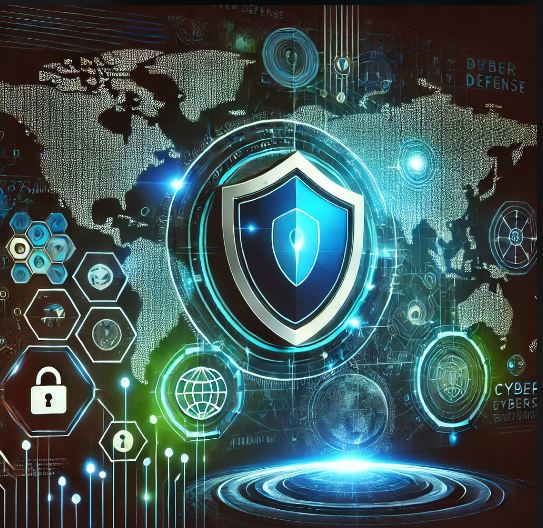In today’s interconnected digital age, cyber crimes pose a significant and growing threat to national security. From data breaches and ransomware attacks to espionage and critical infrastructure sabotage, cyber crimes undermine a country’s economic stability, military defense, and public safety. Protecting a nation from such threats requires a multi-layered approach that combines technological, legislative, and social measures. This article outlines strategies that nations can adopt to strengthen their defenses against cyber crimes.
Understanding the Threat Landscape
Cyber crimes are diverse in nature and constantly evolving. Key threats include:
- Cyber Espionage: Nation-states or criminal organizations steal sensitive government, military, or corporate data.
- Critical Infrastructure Attacks: Cyber attacks on power grids, water systems, and transportation can cripple a country’s functionality.
- Ransomware: Cybercriminals encrypt critical systems and demand payment for restoration.
- Disinformation Campaigns: Propaganda spread via digital platforms can destabilize societies and influence elections.
- Financial Crimes: Fraud, identity theft, and hacking of financial institutions undermine trust in the economy.
To counter these threats effectively, countries need a comprehensive strategy that integrates proactive and reactive measures.
1. Building a Robust Cybersecurity Framework
The cornerstone of national cyber defense is a resilient cybersecurity framework. Governments must develop strategies to protect digital assets and networks.
a. National Cybersecurity Strategy
A well-defined strategy outlines the country’s approach to cyber defense. It includes goals, priorities, and measures to combat cyber threats. Key components include:
- Identification of critical sectors and assets.
- Risk assessment and mitigation plans.
- Incident response protocols.
b. Securing Critical Infrastructure
Protecting essential services like energy, water, and healthcare is paramount. This involves:
- Implementing robust security measures, including firewalls, encryption, and intrusion detection systems.
- Conducting regular vulnerability assessments and penetration tests.
- Establishing partnerships between the public and private sectors to share intelligence and best practices.
c. Cybersecurity Research and Development
Investing in research and development ensures that nations stay ahead of emerging threats. Governments can fund innovation in:
- Advanced threat detection tools.
- Artificial intelligence and machine learning to predict and prevent attacks.
- Quantum computing for encryption.
2. Strengthening Legal and Regulatory Measures
An effective legal framework is crucial to deter cyber criminals and enforce accountability.
a. Enacting Cyber security Laws
Governments should introduce comprehensive legislation to address cyber crimes. These laws should:
- Define cyber crimes and penalties clearly.
- Mandate data protection and privacy requirements.
- Regulate the use of emerging technologies, such as AI and IoT.
b. International Cooperation
Cyber crimes often transcend borders, making international collaboration essential. Nations can:
- Join global organizations like INTERPOL and the Global Forum on Cyber Expertise (GFCE).
- Participate in treaties like the Budapest Convention on Cybercrime.
- Share intelligence with allies to track and apprehend cybercriminals.
c. Establishing Regulatory Bodies
Dedicated regulatory agencies should oversee cybersecurity compliance in industries. These bodies can:
- Monitor and audit companies for vulnerabilities.
- Impose fines for non-compliance with cybersecurity standards.
- Provide guidance on best practices.
3. Enhancing Cyber security Education and Awareness
A country’s cybersecurity is only as strong as its weakest link, often the human factor. Raising awareness and building skills is critical.
a. Public Awareness Campaigns
Governments should educate citizens on basic cybersecurity practices, such as:
- Using strong, unique passwords.
- Recognizing phishing attempts.
- Avoiding suspicious downloads and links.
b. Cybersecurity in Education
Incorporating cybersecurity into school and university curriculums builds a skilled workforce. This can include:
- Coding and ethical hacking courses.
- Training in threat analysis and incident response.
- Scholarships and incentives for cybersecurity-related studies.
c. Workforce Development
To address the shortage of cybersecurity professionals, nations can:
- Launch training programs and certifications for IT professionals.
- Collaborate with private companies to upskill employees.
- Create apprenticeship programs for hands-on experience.
4. Leveraging Technology for Defense
Emerging technologies offer innovative solutions to combat cyber crimes.
a. Artificial Intelligence and Machine Learning
AI-driven systems can analyze vast amounts of data to detect anomalies and predict attacks. Use cases include:
- Identifying malware patterns in real-time.
- Automating incident response to minimize damage.
- Monitoring networks for insider threats.
b. Blockchain Technology
Blockchain’s decentralized and tamper-proof nature enhances security in various applications, such as:
- Securing financial transactions.
- Protecting supply chain data.
- Ensuring the integrity of voting systems.
c. Cyber Threat Intelligence Platforms
Threat intelligence platforms aggregate data on cyber threats from multiple sources. These tools enable:
- Proactive identification of vulnerabilities.
- Sharing of threat data across organizations.
- Faster response to incidents.
5. Establishing Cyber Defense Forces
In addition to civilian efforts, nations should develop specialized military units for cyber defense.
a. Cyber Command Units
Dedicated cyber command units within the military can:
- Monitor and defend against cyber attacks targeting defense systems.
- Launch offensive operations against adversaries when necessary.
- Collaborate with intelligence agencies to thwart espionage.
b. Joint Operations
Collaboration between military, intelligence, and law enforcement agencies ensures a unified response to cyber threats. This includes:
- Conducting joint training exercises.
- Sharing intelligence on emerging threats.
- Coordinating responses during national emergencies.
6. Building Resilience Through Public-Private Partnerships
The private sector often controls critical infrastructure and possesses valuable technological expertise. Collaboration between governments and businesses is essential.
a. Information Sharing
Establishing platforms for real-time information sharing helps both sectors respond quickly to threats. For example:
- Sharing indicators of compromise (IOCs) from recent attacks.
- Developing sector-specific threat intelligence reports.
b. Financial Support
Governments can provide grants and tax incentives to encourage companies to invest in cybersecurity.
c. Incident Response Collaboration
In the event of a large-scale cyber attack, public and private entities can pool resources to:
- Mitigate the impact.
- Restore services quickly.
- Conduct forensic investigations.
7. Fostering a Culture of Cybersecurity
Ultimately, cybersecurity is not just a technical challenge but a cultural one. Nations must foster a mindset that prioritizes security at every level.
a. Leadership Commitment
Government leaders must champion cybersecurity initiatives, ensuring they receive adequate funding and attention.
b. Personal Accountability
Every citizen and employee should understand their role in maintaining cybersecurity. Simple actions like updating software and reporting suspicious activity can make a difference.
c. Celebrating Successes
Highlighting success stories in thwarting cyber attacks can boost morale and inspire continued vigilance.
Conclusion
Protecting a country from cyber crimes is a continuous and dynamic process. It requires a combination of technological innovation, legal enforcement, education, and collaboration. By adopting a multi-faceted approach, nations can not only defend against existing threats but also anticipate and prevent future ones. In the digital age, cyber security is not just a necessity—it is a cornerstone of national security.




